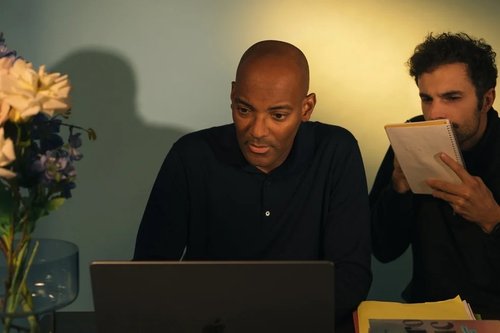Parkinson’s law: having more time does not mean more productivity
Jan 28, 2020
4 mins


Redactor freelance especializado en tecnología y startups
You may have been commissioned to prepare a detailed report that, under normal circumstances, would take about 40 hours of work to complete, but your company has set a deadline of two weeks for delivery. As is the case with most of us, it is highly likely that you will stretch out the work to fill those two weeks (about 80 hours of work) instead of optimising your performance and having it ready in half the time. Don’t worry, you’re not alone: this is the effect of Parkinson’s law.
What is Parkinson’s law?
In 1955, Cyril Northcote Parkinson, a British Naval historian and author, wrote in a satirical essay for The Economist that “work expands so as to fill the time available for its completion”. He called this theory Parkinson’s law, which is based on his experience in the Civil Service. Over the years, his theory has become a posthumous success in business theory regarding the organisation of work tasks.
Parkinson believed that if we have a specified timeframe to carry out a task, the time we use is extended to fill the period we have been given before the deadline. This means that we take all available allotted time to complete the task, even if we don’t really need it.
We take all available allotted time to complete the task, even if we don’t really need it.
How Parkinson’s law affects productivity
According to Parkinson’s law, instead of working efficiently to do more in less time, we lengthen the process. This makes us much more likely to procrastinate and our productivity plummets. For the British historian, this paradigm has several direct consequences on our work.
Instead of working efficiently to do more in less time, we lengthen the process.
- Less effort: According to Parkinson’s law, we tend to work at a slower pace until the allotted time comes to an end instead of embracing the challenge of finishing a task within the shortest possible time.
- Using the entire budget available: When the work includes managing a budget, we often choose to use the full amount, even when it’s not strictly needed. This decision is often driven by the fear of requiring a larger budget in the future and not having it available because it was previously shown as unnecessary.
- Overcomplicating the task in hand: If we spend more time than is really necessary to complete a task, our work becomes more complex. This can be counterproductive if all we need is a quick, concise response to a specific question.
- A tendency to devote more time to trivial tasks: This is known as the law of triviality, which is directly related to Parkinson’s law. It implies that less important tasks will monopolise most of the planning and time available, while the really important ones, which define the “real” work capacity in the day-to-day business of the company and the achievement of long-term objectives, end up losing their significance weight they should have.
Just look at the Brexit negotiation process and the consequences of Parkinson’s Law are clearly visible. The British Government triggered Article 50, which began the process of leaving the European Union in March 2017. This gave the UK two years to complete negotiations before leaving the EU in March 2019. The UK failed to meet its March 2019 deadline, but whenever the EU piled the pressure on, the leaving process sped up. Could the UK have achieved the same results if the country had been given only six months to negotiate?
In situations where there is added pressure, when confronted with negative consequences for not meeting our deadlines we tend to move away from Parkinson’s law and become more productive.
How to perform more tasks in less time
The easiest way to combat Parkinson’s Law is to begin by assuming that we don’t have to finish a task or a project based on having to use up all the allocated time.
It’s not about obsessing and trying to move a deadline forward—there can be delays in projects and sometimes the actual time assigned is required—nor is it about taking on too much work. It’s about finding an honest balance in which our productivity is reasonable and we are able to complete more tasks in less time.
We don’t have to finish a task or a project based on having to use up all the allocated time.
Productivity and time-management techniques can be useful when we are trying to optimise our time:
- Use a time-blocking technique: This is about assigning specific blocks of time to each activity. To avoid interruptions and distractions when we answer emails, rest, browse social networks and so on, time-blocking forces us to allot specific time slots to each task, so that we use them to their full potential. For example, set aside 50 minutes to prepare a report, then 10 minutes to answer emails, another 70 minutes to continue working on the report and after that 15 minutes of rest. Organise tasks precisely and you will keep order, steer clear of chaos and avoid unnecessarily dragging the task out.
- Apply the two-minute rule: This is a basic rule of the Getting Things Done (GTD) method, created by productivity consultant David Allen. It works on the principle that any task we can perform in less than two minutes must be completed immediately, rather than be scheduled or postponed. This duration may vary depending on context, but the principle remains the same: do what you can do right now and avoid postponing it. For example, respond immediately to an email, send a document to a partner and so on.
Any task we can perform in less than two minutes must be completed immediately, rather than be scheduled or postponed.
- Follow the Pareto principle: Often referred to as the 80/20 rule, this principle states that 80% of the results come from 20% of the effort applied to a task or project. This means that the bulk of our work has less impact on the final result, while the most significant result is produced in a reduced timeframe. With that in mind, our challenge is identifying which activity is the most important and then dedicating that 20% to it, so a task is achieved in the shortest possible time.
- Create your own method: The techniques above propose generic approaches, but you can tailor a method to specifically meet your day-to-day challenges and limitations. Based on any of the previous points or any other well-known time-management techniques, you can create a method that seamlessly fits your daily activity and your requirements. For example, if your weak point is distractions, create rules and a routine that focuses on eliminating them. Alternatively, if you tend to leave everything to the last minute, create a system with realistic time allocations that you have to stick to.
Now that you know the risks of Parkinson’s law, don’t get sucked in by delaying tactics and dithering. Dare yourself to challenge deadlines assigned to you and your ability to do a better job in less time. Not only will it improve your results, but it will also increase your personal satisfaction.
Photo: Welcome to the Jungle
Translated by Sunita Maharaj-Landaeta
Follow Welcome to the Jungle on Facebook and sign up for our newsletter to receive our best articles every week.

More inspiration: Productivity & tools

Goal setting: How to bounce back when you feel like a failure
The big F word ... Failure. We all face it, but here’s how to make it your secret weapon for success.
Dec 18, 2024

Productivity boost: Why mental health outshines long hours
Long hours don’t equal better work. Discover how mental health support can unlock productivity and time efficiency in the workplace.
Nov 28, 2024

10 fun ways people are using AI at work
While many use AI for basic tasks like grammar checks or voice assistants, others are finding innovative ways to spice up their work days.
Nov 05, 2024

12 Slack habits that drive us crazy
Slack is a top messaging platform, but coworkers can misuse it. Over-tagging and endless messages can make it frustrating ...
Oct 16, 2024

10 CareerTok creators you should be following
Looking for career advice? CareerTok has quick tips from real experts on interviews and job offers.
Sep 25, 2024
The newsletter that does the job
Want to keep up with the latest articles? Twice a week you can receive stories, jobs, and tips in your inbox.

Looking for your next job?
Over 200,000 people have found a job with Welcome to the Jungle.
Explore jobs